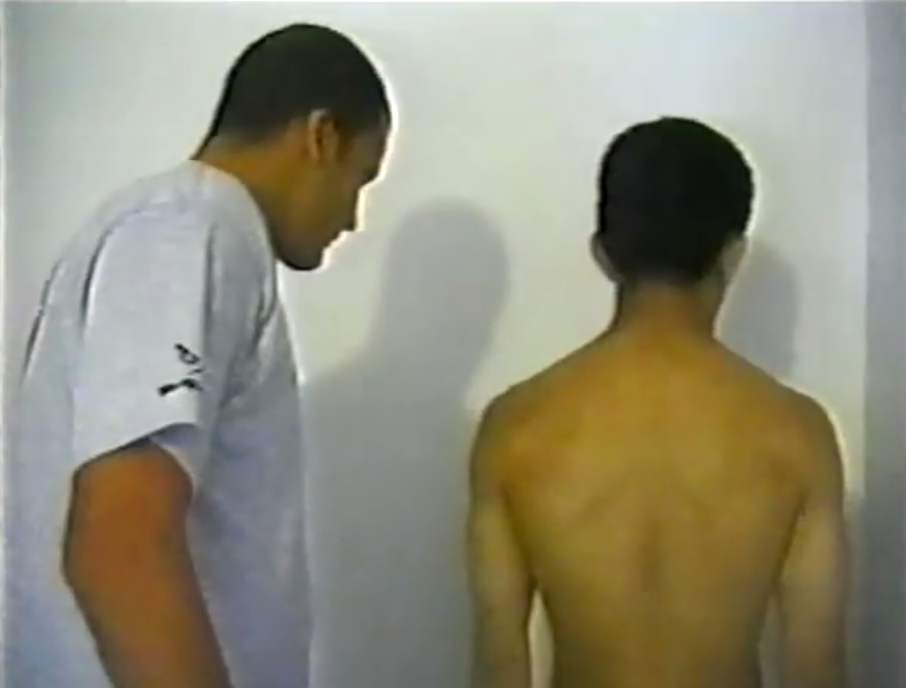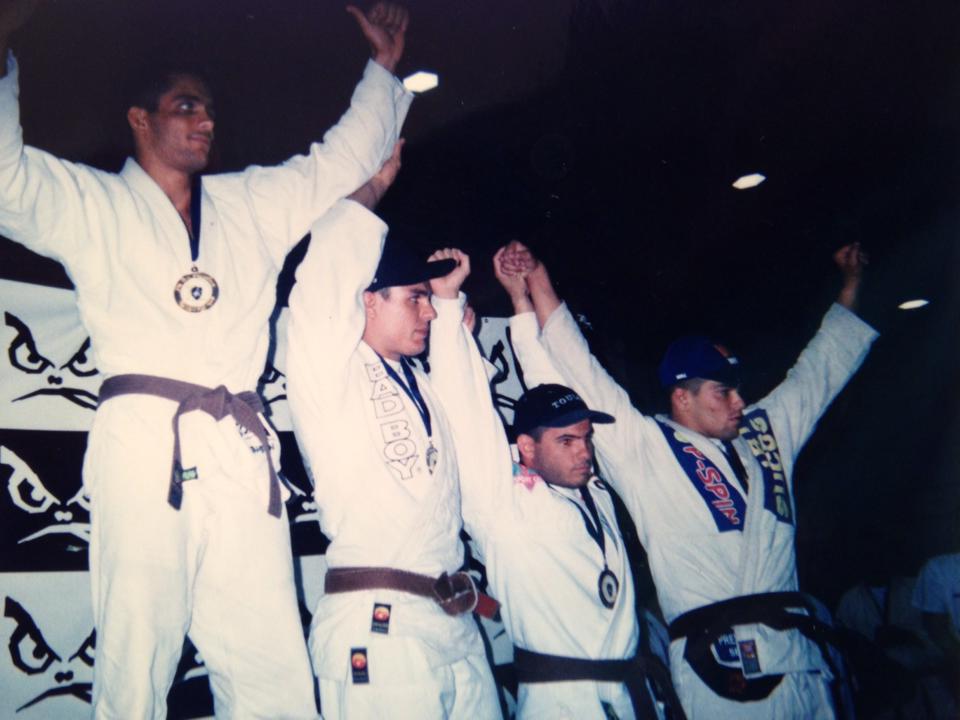
Cssio Werneck in action in Hawaii
After two years in California, the Pan Jiu-Jitsu Championship jumped on the plane for two editions in Hawaii.
Honolulu was the city chosen to host the championship.
In 1997, Japanese TV made a film on the event.
Marcelo Araujo, now the IBJJF VP, is seen in the video weighing the athletes.
He tells us what he remembers of that years: “Back then, the idea was to rotate the Pan throughout the USA. I think that Relson Gracie gave the idea of doing it in Hawaii and Carlos Gracie Jr agreed. We had around 300 athletes on each year. One curious thing is that even today it’s hard to find Jiu-Jitsu mats in Hawaii, so both events were made on wrestling mats. For the recent IBJJF Honolulu International Open (2010) we had to ship the mats from California and later it was sold in Hawaii. On the mats, I remember two great fights. Marcio Feitosa defeated Vitor Shaolin in 1997 and Saulo Ribeiro had a great battle against Renato “Charuto” Verissimo in 1998.”

Marcelo Araujo checking Yuki Nakai’s weight in 1997
A few curiosities about the 1997 Pan.
Rickson’s late son Rockson Gracie competed as a blue belt and finished third in the blue belt roosterweight division.
Kai Garcia, leader of Kauai’s ever-present Wolf Pack, competed as a purple belt and won the absolute division.
Rigan Machado won his second absolute title in the black belt division.
Also in the black belt division, Royler Gracie competed and won the featherweight division.
As a matter of fact, Royler was the only athlete to win a division in the adult black belt that year who didn’t belong to the Gracie Barra school. The other champions were: Marcio Feitosa (light), Fernando Vasconcelos (medium), Roberto Magalhães (medium-heavy), Ricardo Herriot (heavy), Roberto Correa (superheavy), Rigan Machado (ultra-heavy and absolute).
Royler also talked about his experience in 1997: “It was great. I love Hawaii and I had the opportunity to fight Marcos Aurelio and get the finish (watch the match below). He had defeated me months before in Rio, by ref decision. Hawaii is always Hawaii and I think something changed with that championship. It established Jiu-Jitsu in the islands and helped to counterweight the localism, always a big thing in Hawaii. That place was always mystic for Brazilians, but they would hide from the locals to avoid trouble. With Jiu-Jitsu, that changed.”
Roberto Godoi, now leader of Godoi JJ and still an active competitor in the Master division, competed as a black belt in 1997 and came back from Hawaii with two medals, silver in the heavyweight and bronze in the absolute. He tells us a bit of his experience: “It was great championship to compete in. For me specially because it was my first event as a black belt, which I had received at the end of 1996. You can’t compare the structure back then with today, but it was a beginning for sure. I remember we exchanged six months worth of sponsorship to pay the trip of eight athletes from our team in Brazil. We were the ones who brought the event t-shirts that the CBJJ would distribute to the athletes. A funny thing happened during the weigh ins, which were done one day before the competition. It was held at Master Relson Gracie’s academy and behind us there was a group of Japanese fighters. At one point, Master Relson started asking all athletes who their professors were. The Japanese, not understanding exactly what Reslon meant, took out VHS tapes of them training to prove they were indeed Jiu-Jitsu fighters.”
In 1998, Rockson competed again in the blue belt roosterweight division and won gold.
Still a purple belt, Alexandre Ribeiro won the featherweight division.
The future two-time absolute black belt world champion remembers those days in Hawaii: “I remember that everyone would hangout together all the time. Athletes from all academies on the hotel, walking the streets. It was fun. I had to really go on a hard diet to weigh in at 67kg. I was only 17 then.”
Also in the purple belt, brothers Gabriel and Thiago Vella dominated both the middleweight and the open class.

Cassio Werneck on the top of the podium in 1997 Photo: Cassio Werneck’s archives
Cassio Werneck, today leader of Werneck BJJ, in Sacramento, CA, was a brown belt in 1998 and won the medium-heavy division. He also tells us what he remembers of that year: “I have a lot of stories about the Pan. In Hawaii I won two times, in 97 and 98. I remember that the Pan 1997 was a breaking point for and the first time I won a division in a big event. I had three fights and finished all my three opponents. The final match was against the later famous Jorge Patino “Macaco”. A curious fact was that Ryan Gracie was rooting for me in that fight, because of his problems with Macaco. In the end, I was able to catch him with a nice triangle. Master Carlos Gracie Jr was the commentator for the Brazilian TV and said that I was the technical standout.”
In the black belt division, Saulo Ribeiro had a double gold competition, winning the heavyweight and the absolute.
The post Pan 20 years: 1997, ’98 — Jiu-Jitsu in paradise first appeared on Graciemag.


